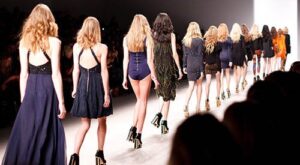Dreadlocks Origin: Rastafarian Movement
Hairs on the human head add to the whole personality. In some societies, hair represents a connection to their roots, such as spiritual connections, cultural background, or historical evolution. Dreadlocks is one of their hairstyles that is now gaining popularity and has been famous in the past.
You may have read about dreadlocks and think you know about them, but are you here to learn more about their history and evolution? This blog will share how dreadlocks started and evolved over time.
Further, our blog will help beginners understand how to start dreadlocks, different types of dreadlocks, hairstyling ideas with locs, advanced tools and maintenance kits, and much more.
If you are new to the locs journey, scroll through our blog and find solutions to your dreadlocks problems.
There are many specific regions where dreadlocks come from. Africans are the ancestors having thick and coarse hair and had dreadlocks in their community. Early discoveries of dreadlocks have come from places in India and Egypt.
The dreadlocked priest Shiva had a significant impact on Indian culture and inspired millions of people practicing Hinduism. Shiva is the 3rd god in Hinduism, physically a male body, female face, and beautiful long dreads.
Where do Dreadlocks Come From?
There is no specific region from where dreadlocks come. They root back to ancient Egyptians, Maori warriors, and Maasai tribes. Early discoveries arose from Egypt and India, dating back to 1500 BC, when the 3rd God of Hinduism, Shiva’s hair, was called “jata.” It means “twisted locks of hair.” Shiva is physically painted as a male body and female face with thick, beautiful, long dreads.
Furthermore, the archaeological evidence reveals dreadlocks in the remains of ancient mummified Egyptians during pre-Columbian civilization. It shows that the dreadlocks have been here since the beginning of man and are often represented as powerful beings.
Later on, Mesoamerican people also wore dreadlocks between the 14th and 16th centuries, passed on to the next generations and adopted by others.
Culture & Locs:
In some cultures, such as South Asia and the Middle East, matted locs were considered a valid symbol of rejecting materialism. In other cultures, it symbolizes a higher power and social connection. For instance, in Mexico, Aztec priests had their hair untouched, which resulted in long, matted locs.
Likewise, locs associated with strength in Africa are only worn by warriors. Interestingly, locs are wealth-bringing factors in kids born with naturally matted hair. Africa, Kenya, and Kikuyu tribes are common cultural examples.
The Rastafari Heritage:
The Rastafari movement is another addition to the cultural history of dreadlocks that originated in the 1930s in Jamaica. For Rastafarians, dreadlocks were more than a hairstyle such as a symbol of devotion and spirituality.
African-Caribbean Worldview:
Dreadlocks hold profound cultural significance within African and Caribbean tribes, reflecting a solid tie between heritage and tradition. In these cultures, it is merely a hairstyle and a symbol of devotion and assistance against oppression.
The African ethnic groups, including Jamaica and Rastafarians, manifest their commitment to the principles of the Rastafari movement. In such tribes, it also signifies a connection to the ancestor’s rejection of beauty standards and a celebration of natural beauty.
Additionally, dreadlocks are a sign of strength, solidarity, and resilience against the society’s norms, embodying a profound sense of cultural pride.
Nineteenth century & Locs:
At the beginning of the 19th century, Polish wore locs, another similar hairstyle named Polish plaits. They believed that not washing and combing the hair regularly protects it from certain diseases.
With time, the followers of the Mouride movement added a mystic touch to the locs when Shaykh Aamadu Bàmba Mbàkke started growing locs. The introduction of dreadlocks to this Islamic group symbolizes it as a religious orientation.
Further, Jamaican Rastas shared similar beliefs based on religious and spiritual purposes.
Trendy admiration:
Over the years, dreadlocks became a symbol of freedom and motivation. During the 1980s, it was considered a way of rejecting the social norms about hairstyles and offered an opportunity for individuals to express their authenticity.
Over the last few decades, its influence is increasing among celebrities, influences, and singers.
Bob Marley & Reggae became an inspiration among the young Afro-Americans to bring this hairstyle back in fashion. Furthermore, social media played a vital role in its popularity, and more and more people started wearing locs as a new hairstyle, breaking all the stereotypes.
Although more black men and women in Hollywood wear locs, there is never a Black Miss America with locs as it always faces pushback in the fashion industry. Furthermore, Hollywood cinema uses them as a prop for villains and pirates. With no solid invention to mention, dreadlocks with positivity, they use it to give negative vibes regardless.
Conclusion:
Dreadlocks, often regarded as more than a hairstyle, carry a rich history linked with various cultures worldwide. They gained dominance from the Rastafarian movement and have deeper roots in Africa.
To sum up, it is more than a hairstyle and no less than a lifestyle, as it’s not easy to install and maintain it.
FAQs
What is the history behind dreadlocks?
Dreadlocks root back between 1500 BC and 2500 BC. They were worn by the people in the Sahar desert in 3000 BC, followed by Abraham’s religion, the Rastafarian movement, and Aztec priests.
What cultures wore dreadlocks?
Warriors from Africa, Wolof, Fulani, and Mauritania wore dreadlocks as an example of strength. Furthermore, Kikuty and Somalis have worn braided hairstyles for centuries.
Did Indians start dreadlocks?
Dreadlocks originated from Indians, as their 3rd lord, Shiva, was the first to wear them. Now, the “Sudhus,” the holy men, wear locs to facilitate the energy flow.
What is the spiritual meaning of dreadlocks?
In some spiritual and religious practices, the locs symbolize devotion, commitment, and practice of a particular lifestyle.





